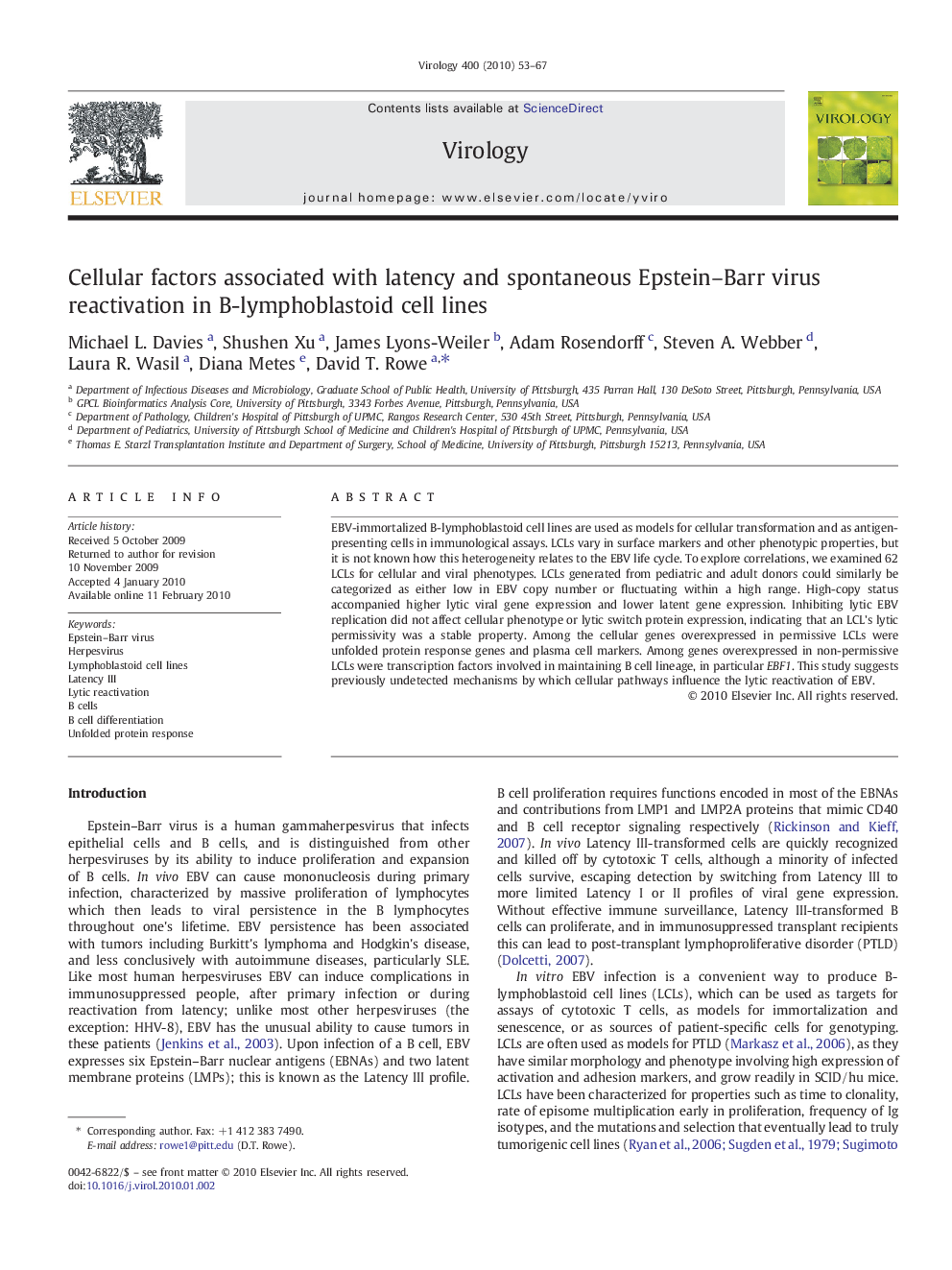| Article ID | Journal | Published Year | Pages | File Type |
|---|---|---|---|---|
| 3425118 | Virology | 2010 | 15 Pages |
EBV-immortalized B-lymphoblastoid cell lines are used as models for cellular transformation and as antigen-presenting cells in immunological assays. LCLs vary in surface markers and other phenotypic properties, but it is not known how this heterogeneity relates to the EBV life cycle. To explore correlations, we examined 62 LCLs for cellular and viral phenotypes. LCLs generated from pediatric and adult donors could similarly be categorized as either low in EBV copy number or fluctuating within a high range. High-copy status accompanied higher lytic viral gene expression and lower latent gene expression. Inhibiting lytic EBV replication did not affect cellular phenotype or lytic switch protein expression, indicating that an LCL's lytic permissivity was a stable property. Among the cellular genes overexpressed in permissive LCLs were unfolded protein response genes and plasma cell markers. Among genes overexpressed in non-permissive LCLs were transcription factors involved in maintaining B cell lineage, in particular EBF1. This study suggests previously undetected mechanisms by which cellular pathways influence the lytic reactivation of EBV.
